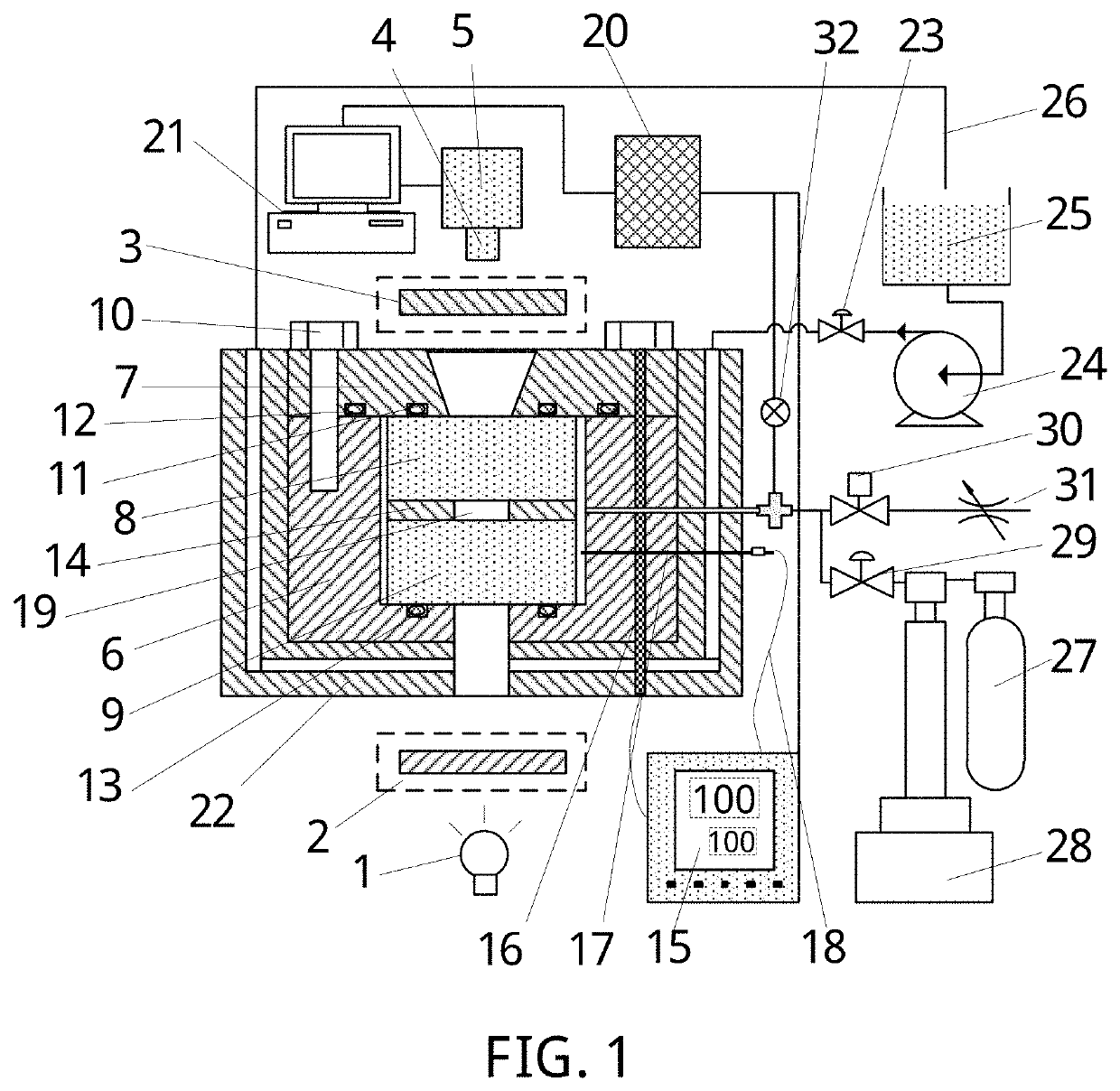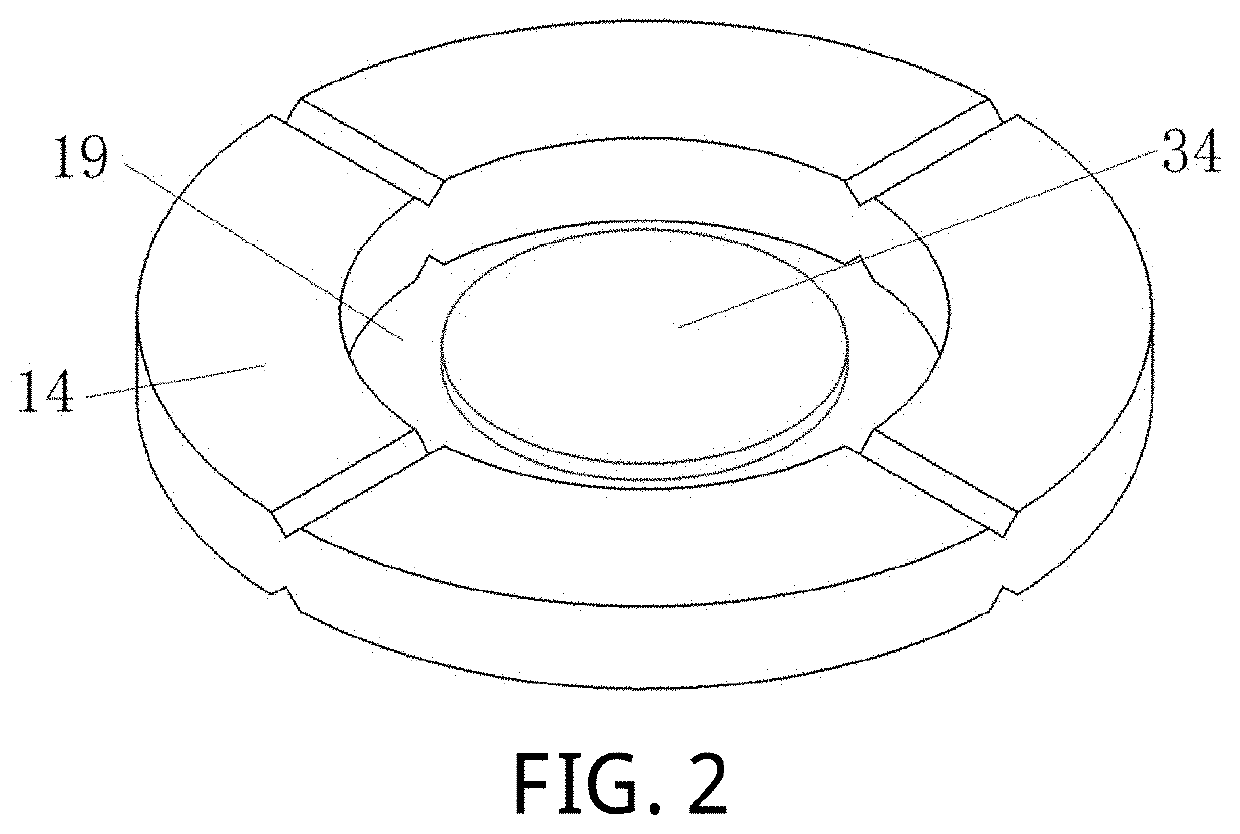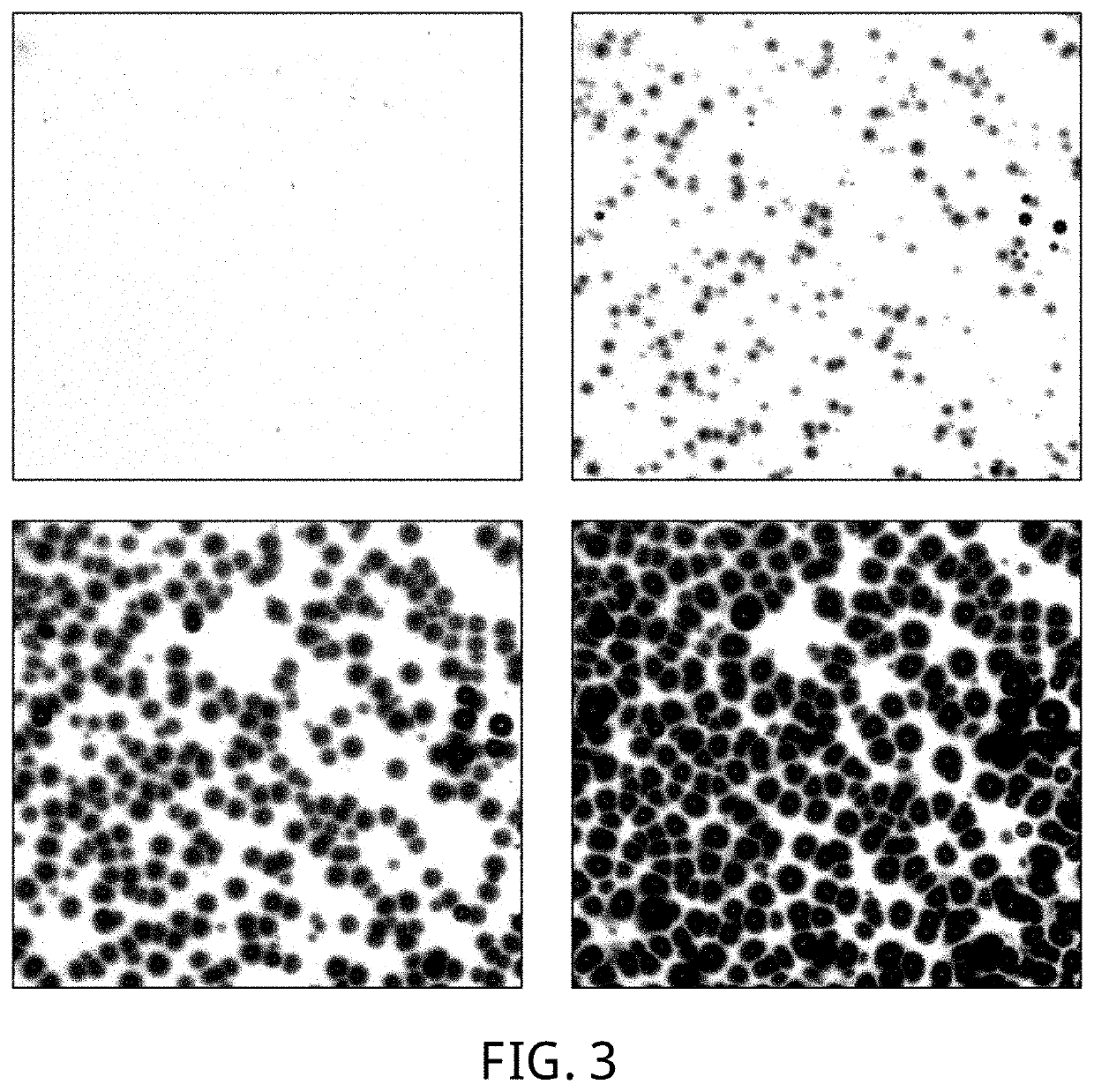Microscopic observation system with temperature-pressure-controllable sample cell and methods
- Summary
- Abstract
- Description
- Claims
- Application Information
AI Technical Summary
Benefits of technology
Problems solved by technology
Method used
Image
Examples
embodiment 1
[0091]A phase separation process of a carbon dioxide / polymethyl methacrylate (PMMA) system in a rapid pressure relief process is observed by using a common optical microscopic function:
[0092]Step (1), PMMA is made into a thin sheet with a thickness being 200≈m.
[0093]Step (2), the third sealing ring 13, the lower glass window 9 and the breathable gasket 14 are sequentially placed inside the autoclave body 6. The sample 34 is placed into central space 19 of the breathable gasket 14. Then the upper glass window 8 is placed on an upper surface of the breathable gasket 14. The first sealing ring 11 and the second sealing ring 12 are installed in a groove of the autoclave cover 7 and a groove in an upper surface of the autoclave body 6, respectively. The autoclave cover 7 and the autoclave body 6 are connected through the bolts 10 and all the parts are tightly squeezed.
[0094]Step (3), the second stop valve 29 and the third stop valve 30 are opened. The plunger pump 28 is started, and is a...
embodiment 2
[0102]A crystallization process of poly(L-lactide) (PLLA) in high-pressure carbon dioxide is observed by adopting a polarizing microscopic function:
[0103]Step (1), PLLA is made into a thin sheet with a thickness being 15≈m.
[0104]Step (2), the third sealing ring 13, the lower glass window 9 and the breathable gasket 14 are sequentially placed inside the autoclave body. The sample 34 is placed into the central space 19 of the breathable gasket 14. Then the upper glass window 8 is placed on the upper surface of the breathable gasket 14. The first sealing ring 11 and the second sealing ring 12 are respectively installed in the groove of the autoclave cover 7 and the groove in the upper surface of the autoclave body 6. The autoclave cover 7 and the autoclave body 6 are connected through the bolts 10 and all the parts are tightly squeezed.
[0105]Step (3), the second stop valve 29 and the third stop valve 30 are opened. The plunger pump 28 is started, and is adjusted to the constant-flow mo...
PUM
 Login to View More
Login to View More Abstract
Description
Claims
Application Information
 Login to View More
Login to View More - R&D
- Intellectual Property
- Life Sciences
- Materials
- Tech Scout
- Unparalleled Data Quality
- Higher Quality Content
- 60% Fewer Hallucinations
Browse by: Latest US Patents, China's latest patents, Technical Efficacy Thesaurus, Application Domain, Technology Topic, Popular Technical Reports.
© 2025 PatSnap. All rights reserved.Legal|Privacy policy|Modern Slavery Act Transparency Statement|Sitemap|About US| Contact US: help@patsnap.com



